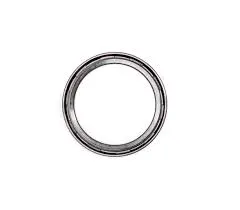7 月 . 27, 2024 17:38 Back to list
Exploring the Benefits and Applications of High Pressure Oil Seals in Industrial Machinery.
Understanding High Pressure Oil Seals Functions, Types, and Applications
High pressure oil seals are essential components used in various machinery and automotive applications to ensure the effective sealing of fluids, particularly oils, at high pressures. These seals play a critical role in preventing leaks, maintaining pressure integrity, and protecting sensitive components from contamination. With advancements in material science and engineering, high pressure oil seals have become increasingly reliable, making them integral to the performance of numerous systems, from automotive engines to industrial hydraulic systems.
Functions of High Pressure Oil Seals
The primary function of high pressure oil seals is to contain the lubricating oil within a system while preventing external contaminants from entering. This containment is crucial for maintaining optimal lubrication temperatures and reducing friction between moving parts. Additionally, these seals are designed to withstand significant pressure without compromising their structure or functionality. They help in minimizing wear and tear on components by ensuring that the oil is effectively directed where it is needed, thereby enhancing the longevity and efficiency of the machinery.
High pressure oil seals also protect against leakage, which can be costly and potentially hazardous. Oil leaks can lead to environmental pollution, diminished operational efficiency, and the risk of system failure. By ensuring a tight seal, these components contribute to the overall safety and reliability of mechanical systems.
Types of High Pressure Oil Seals
High pressure oil seals can be categorized based on their design and the materials used
. Common types include1. Rotary Seals These seals are designed for rotating shafts and are typically used in automotive applications, such as engine crankshafts and transmission systems. They are made from flexible materials that can adapt to the dynamic movement.
2. Static Seals These are used in applications where there is no movement between the sealing surfaces. They are often found in hydraulic cylinders and flanged connections.
high pressure oil seals

3. Double Lip Seals Incorporating two lips, these seals provide enhanced sealing capabilities. They are particularly effective in preventing contaminants from entering while retaining the pressurized oil.
4. V-Rings A type of axial seal that fits around a shaft, offering protection against dirt and moisture. V-rings are often used in conjunction with other seals for additional security.
The materials used in the construction of high pressure oil seals include elastomers like nitrile rubber (NBR), fluorocarbon (FKM), and silicone rubber. Each material has specific properties that make it suitable for different temperatures, pressures, and chemical exposures.
Applications of High Pressure Oil Seals
High pressure oil seals are indispensable in a wide range of applications. In the automotive industry, they are used in engines, transmissions, and drive axles. Their reliable sealing capabilities help enhance fuel efficiency and performance while minimizing emissions.
In industrial settings, high pressure oil seals are found in hydraulic systems, compressors, and pumps. The efficiency and effectiveness of these systems greatly depend on the integrity of the seals, as they prevent valuable lubricants from escaping and protect internal components from harmful debris.
In aerospace and marine applications, high pressure oil seals help ensure the safe and efficient operation of engines and hydraulic systems under extreme conditions.
Conclusion
High pressure oil seals are vital components that ensure the reliability and efficiency of a variety of mechanical systems. Their ability to withstand high pressures while preventing leaks and contamination makes them essential in automotive, industrial, aerospace, and marine applications. As technology advances, the design and materials used in high pressure oil seals continue to evolve, further enhancing their performance and durability. Understanding these seals' functions, types, and applications is crucial for engineers, technicians, and anyone involved in maintaining high-performance machinery.